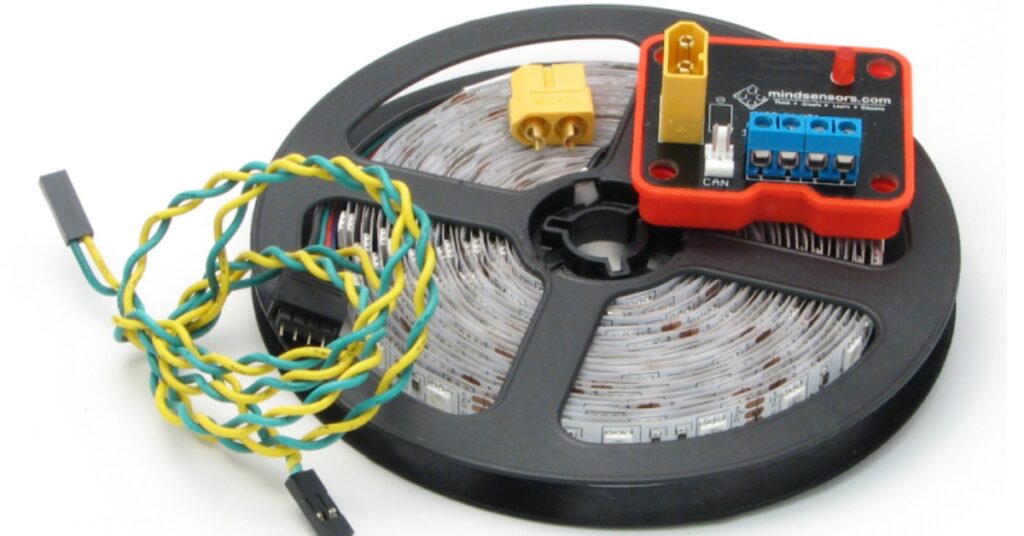Robotics Technology-Based LED: Enhancing Lighting with Cutting-Edge Innovation
Have you ever pondered the transformative impact that robotics technology-based LED lighting could have on our world? The integration of these two cutting-edge fields, robotics and LED technologies, is not just a merger of convenience but a revolution in the making. This comprehensive guide delves into the captivating intersection of robotics and Flickering LED Light, unveiling how these innovations can enhance efficiency, sustainability, and functionality across a myriad of applications. The Evolution of Robotics Technology-Based LED Understanding Robotics Technology-Based LED Robotics Technology-Based LED is the fusion of robotic systems with LED lighting solutions. This powerful combination harnesses the precision and automation capabilities of robotics to elevate the efficiency, accuracy, and adaptability of LED lighting systems. From automated lighting adjustments to intelligent maintenance, this amalgamation opens up a world of innovative, sustainable lighting solutions. The Rise of LED Lighting LED (Light Emitting Diode) technology has significantly evolved over the past few decades, becoming a preferred choice for various lighting applications due to its energy efficiency, longevity, and environmental benefits. Incorporating robotics technology into LED lighting systems is the next step in this evolution, promising even more incredible advancements and applications. Critical Benefits of Robotics Technology 1. Enhanced Precision and Control One of the most significant advantages of integrating robotics with LED lighting is the enhanced precision and control. Robotics can adjust lighting levels, angles, and colors accurately, ensuring optimal illumination for any environment. This precision is particularly beneficial in settings such as: Increased Energy Efficiency Robotics technology-based LED systems can optimize energy usage by adjusting lighting based on real-time data and environmental conditions. This dynamic adjustment leads to substantial energy savings, as lights are only used when and where needed. The benefits include: Improved Maintenance and Longevity Robotic systems can monitor and maintain LED lighting installations, identifying issues before they become significant problems. This proactive approach extends the lifespan of lighting systems and reduces maintenance costs. Key features include: Adaptability to Various Environments The versatility of robotics technology-based LED systems allows them to be tailored to various environments and applications. Some notable examples include: Innovative Applications of Robotics Technology Agricultural Innovations Robotics technology-based LED lighting is revolutionizing agriculture by creating controlled environments that optimize plant growth. Automated lighting systems can adjust the spectrum, intensity, and duration of light based on the specific needs of different crops. Benefits include: Healthcare Advancements In healthcare, robotics technology-based LED lighting systems enhance patient care and operational efficiency. Applications include: Case Studies and Real-World Examples Smart Cities In innovative city initiatives, robotic technology-based LED lighting enhances urban infrastructure. Examples include: Industrial Applications In industrial settings, robotics technology-based LED lighting systems improve safety and productivity. Examples include: Future Trends in Robotics LED Integration with IoT and AI The future of robotics technology-based LED lighting lies in integrating the Internet of Things (IoT) and Artificial Intelligence (AI). These technologies will enable even more sophisticated control and automation, including: Sustainability and Green Technologies As sustainability becomes a global priority, robotics technology-based LED systems will continue to evolve to meet environmental goals. Future developments may include: FAQs Q: How does robotics technology enhance LED lighting systems? A: Robotics technology enhances LED lighting systems by providing precise control, automated maintenance, and adaptability to various environments, increasing efficiency and functionality. Q: What industries benefit the most from robotic technology-based LED lighting? A: Industries such as agriculture, healthcare, manufacturing, and urban infrastructure benefit significantly from robotics technology-based LED lighting due to its precision, energy efficiency, and adaptability. Q: How does robotics technology-based LED lighting contribute to sustainability? A: These systems optimize energy usage, reduce maintenance needs, and can be integrated with renewable energy sources, contributing to lower carbon footprints and greater sustainability. Conclusion Integrating robotics technology with LED lighting is not just a trend, but a game-changer. It offers enhanced precision, energy efficiency, and adaptability across various applications. As these technologies evolve, we can expect even more innovative solutions to transform industries and contribute to a more sustainable future. Embracing robotics LED lighting is not just a step forward in innovation but also a commitment to efficiency and environmental stewardship.
Robotics Technology-Based LED: Enhancing Lighting with Cutting-Edge Innovation Read More »


